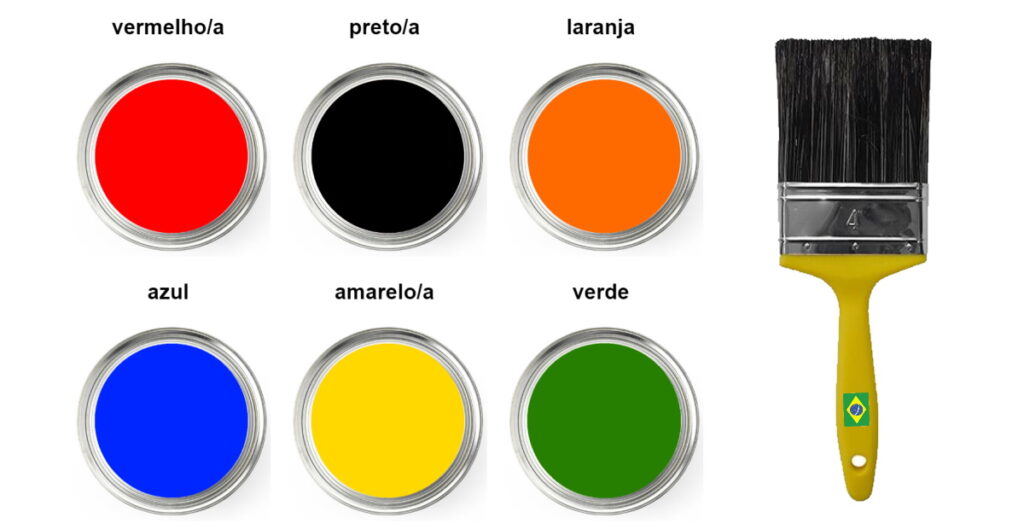This page outlines vocabulary for colours in Brazilian Portuguese.
‘Colours’ translates to cores in Brazilian Portuguese. To ask what colour something is, say que cor é essa? (‘what colour is it?’).

Colours as adjectives
When colours are used as adjectives to tell us more about the noun, they must agree with the noun in gender and number (singular or plural). They must also come after the noun they are describing. For example, ‘pen’ is a feminine noun (a cantea), so ‘the red pen’ translates to ‘a caneta vermelha’ and ‘the red pens’ ‘as canetas vermelhas’.
The following colours vary by gender according to the noun they are referring to:
| English | Masculine | Feminine |
| red | vermelho | vermelha |
| yellow | amarelo | amarela |
| purple | roxo | roxa |
| white | branco | branca |
| black | preto | preta |
Other colours do not have separate masculine and feminine forms and one form can be used for both genders (e.g. ‘the blue car’ – ‘o carro azul’).
See below for a list of colours where one form of the word is used for both genders:
| orange | laranja |
| green | verde |
| blue | azul |
| brown | marrom |
| grey | cinza |
The words incolor and transparante are used when something doesn’t have a colour.
Plurals of colours
In most cases, the plural of a colour is produced by adding ‘s’ to the end of the word, however there are exceptions. The plural of blue (azul) is azuis and the plural or brown (marrom) is marrons e.g. ‘the brown dogs’ = os cachorros marrons.
Colours as nouns
Sometimes colours are used as a noun. When this is the case, the default is to use the masculine ending e.g. ‘my favourite colour is yellow’ = minha cor favorita é amarelo.
Intensity of colour
To say that a colour is ‘light’, or ‘dark’ use claro and escuro:
- ‘light red’ = vermelho-claro
- ‘dark red’ = vermelho-escuro
Colours flashcards
Test your understanding of colours in Brazilian Portuguese using the flashcards below:
Question will appear here
| 👈 Previous page | Next page 👉 |
| Adjectives | Personal pronouns |
